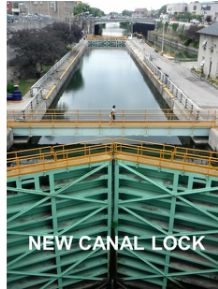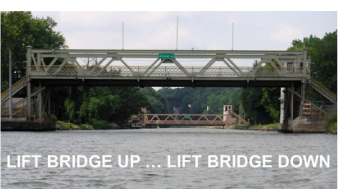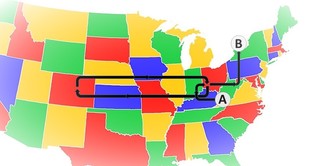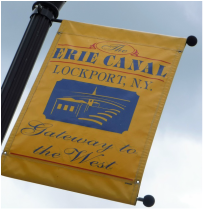Leaving Faith in Albany, Deb and I made a giant clockwise loop through the New England region, enjoying the picturesque hamlets and beautiful countryside. We stopped at museums, monuments, forts, lighthouses, and a couple famous seaports. We lost count of how many white-steepled churches that we saw! Because of the dry season they have had, some of the trees had already started early to embrace their burgundy Fall coloring, giving us a glimpse into how magnificent a New England Autumn must look.
We started with a walking tour of downtown Albany, but quickly the scenic drive took as across Vermont and into New Hampshire and as far as Kittery, Maine. We then drove down the Atlantic coast to Gloucester, and past Boston before turning inland across Rhode Island and down to Mystic Seaport, Connecticut. It was a bit of a whirlwind adventure, but a great reminder of all the fascinating history, three-and-a-half century old architecture, and of how special this part of our country is!
| [Ken 08/18/2016] While at Lighthouse Christian Camp we were very fortunate to have been camped on the other side of the fence (literally) from a 500-acre New York State Park. By virtue of an inviting gate in the fence, we had access to a network of groomed, wooded trails, about three more miles of scenic Lake Ontario shoreline, and the picturesque Thirty Mile Point Light -- this lighthouse has been featured on a US postage stamp. | We were in Golden Hill State Park almost every afternoon for a hike, run, or mountain bike ride. We found a loop trail that was five miles long door-to-door; it became our default route. Once we even found some tasty black raspberries hidden in the underbrush. We also had the chance to kayak into the park from Lake Ontario and explore an estuary that zigged and zagged its way into the park’s froggy wetlands. |
| | "Golden Hill" gets its name from all of the Goldenrod that grows there. And the lighthouse gets its name because it is exactly 30 miles from the light to the Niagrara River. The Great Lakes Seaway Trail goes through the park, as well. We are certainly going to miss the convenient access we had to this place. It has been very handy to have such a great group of trails and beautiful coastline to enjoy while getting daily exercise. |



| Unfortunately for us, a sizable fire on Wednesday evening (it was even on the national news) had marred a section of the canal and Lockport's locks were closed for clean-up. We obtained permission from the Lock Master to paddle into the lower lock (No. 34) and get a close-up look at the massive doors and plumbing. The 1825-era locks were rebuilt in 1934 to accommodate the larger barges of the day – they are now 300 feet long. Impressive from above -- they are doubly impressive from down inside. | |

| After stowing the kayaks, we had lunch and embarked on a tour of the town by foot. There are two free museums that explain the history of the canal and the work required to build a canal that could climb 60 feet up the Niagara Escarpment. We also did a tour of the viaduct that was dug (by hand) to divert canal water in order to turn water wheels at factories built by three of the town's earliest entrepreneurs. Today, there is a flat-bottom boat and a dead-pan guide that will take you on a damp and claustrophobic tour of the man-made cavern. | |

| "Low bridge, everybody down! Low bridge, for we're comin' to a town! And you'll always know your neighbor, And you'll always know your pal, If you've ever navigated on the Erie Canal!" |
| [Deb 08/06/2016] There is so much to see in the Niagara region that we had to spend two days exploring. Ken likes forts and history, so our first stop was Old Fort Niagara. This fort is located on the eastern (New York) side of the lower Niagara River where it meets Lake Ontario. It is well-positioned to defend the mouth of the Niagara River. The Fort is staffed with costumed interpreters in French or British or American uniform – in its history, the area was claimed at some time by all three governments. | |

| After winning the challenge to find a parking place, we hiked the entire length of Queen Victoria Park. The trail follows the Canadian side of the gorge along the Upper Niagara River, past the Falls, and down to the Lower Niagara River. It was about seven miles round-trip. The hike treated us to many views of the Niagara’s rapids, immediately alongside the Canadian Horseshoe Falls, as well as to several viewpoints of the American Falls on the United States’ side of the gorge. | |
As we walked along the path with the thousands of other tourists, we were enveloped by clouds of mist rising from the cascading water below. We donned our rain gear and attempted to take pictures between water droplets. A picture cannot capture the majestic site of God's creation in the Falls, let alone a lens that is covered in water droplets. It is mesmerizing to watch, feel, and hear the roar of the rushing Niagara waters.

| | This picturesque three-century old village sits on the lower Niagara River where it meets Lake Ontario. The updated town has managed to keep its 17th century Canadian charm – its appeal is not hidden by any of the thousands of wonderfully colorful flower boxes and gardens. The streets are touristy with many interesting shoppes and eateries. Ken said the town reminded him of Savannah with a pinch of Mackinac Island and N'Orleans thrown in "...just for good measure." |
| On the Friday after we visited the Canadian side of the Falls, we set off to explore the American side. From downtown Niagara Falls (the City), we hiked an eight-mile loop that took us to viewpoints on Luna Island, Goat Island, Green Island, Terrapin Point, and all along the Niagara Falls State Park shoreline (Trivia: NFSP was the first state Park in the USA). The waters heading toward the Falls were just as fierce on the US side as the ones on the Canadian side. | |

The Niagara Region is something to experience if you ever get a chance. In spite of the crowds, it is a must-see visit. We could easily spend a third day in the area exploring boat rides, caves, and bike paths. So when you put "Niagara" on your Bucket List, be sure to reserve three very full days.
another front yard



Toronto is just 52 miles (as a crow flies) westward across the lake. As the sun sets at the end of a clear day we can see the silhouettes of the downtown capital city's sky-scrapers. Some other area factoids that I found interesting:
- Did you know that over 90% of the water in Lake Ontario is actually water from one of the other Great Lakes?
- Did you know that Lake Ontario is, by surface area, the smallest of the Great Lakes? …but actually contains more water than Lake Erie?
- And did you know that it takes a single drop of water approximately 370 days to flow from Duluth, MN, to Lake Ontario?



























